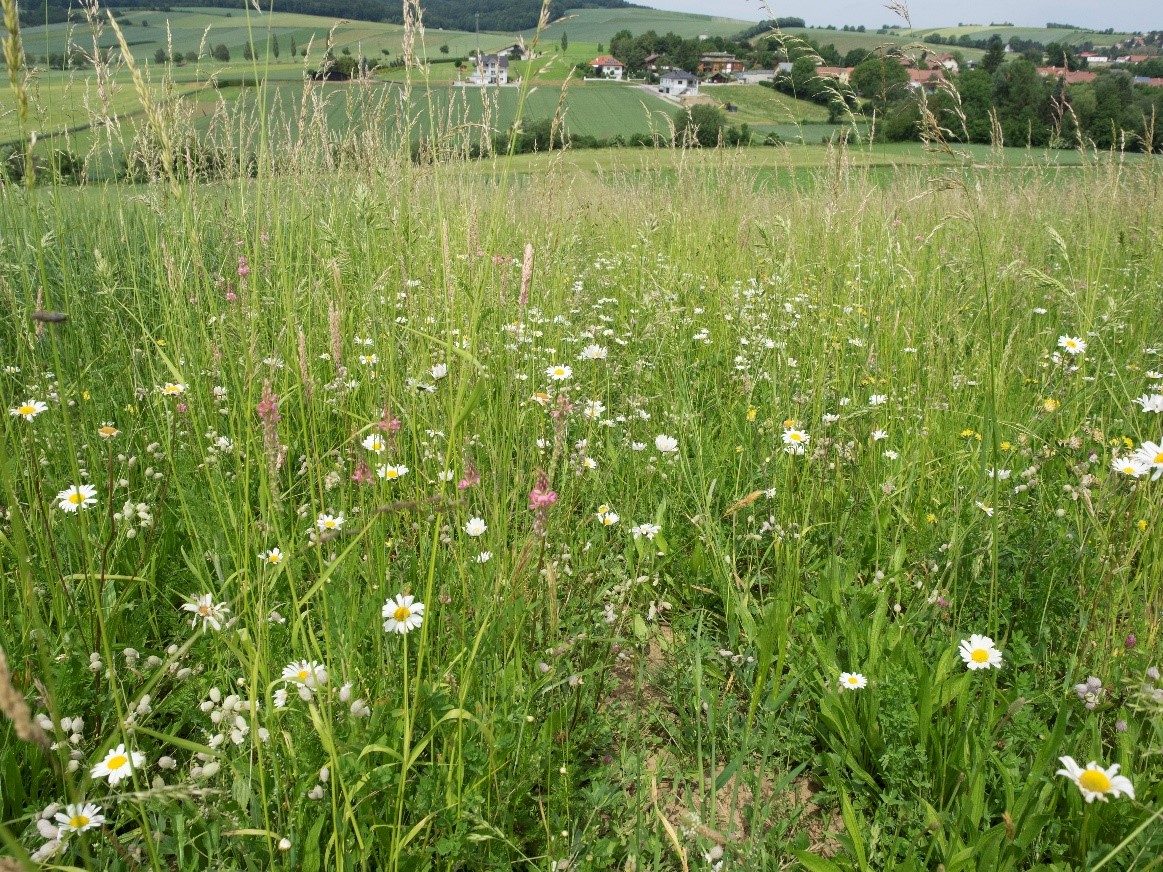
© Dr. Bernhard Krautzer, HBLFA Raumberg-Gumpenstein
Regrass: Wieder-Etablierung von Extensivgrünland zur Förderung von Biodiversität und wesentlichen Ökosystemleistungen (Mitarbeit am FWF-Projekt REGRASS)
Projektleitung
Bernhard Krautzer
Forschungseinrichtung
LFZ Raumberg-Gumpenstein
Projektnummer
101222Projektlaufzeit
-
Finanzierungspartner
Bundesministerium für Land- und Forstwirtschaft, Umwelt und Wasserwirtschaft| Bundesministerium für Nachhaltigkeit und Tourismus| Bundesministerium für Landwirtschaft, Regionen und Tourismus
Allgemeine Projektinformationen
Abstract (deutsch)
Nachstehend eine Auflistung der wesentlichen Zielsetzungen der Projektwerber:
Research questions and objectives
The proposed project i) clearly focuses on short-term response of beneficial arthropods to the manipulative enhancement of perennial habitats in terms of newly established grasslands and ii) has a conservation background by searching for strategies to attenuate the current break down of biodiversity and ecosystem services in agricultural ecosystems.
In the proposed project the following questions are addressed:
1. Are newly established grasslands appropriate to increase species richness and abundance of common agrobiont predators and pollinators within and in the ambient agricultural land in a short term?
2. Do newly established grasslands serve as temporal feeding habitats and dispersal corridor for habitat specialists dispersing from semi-natural source habitats into the agricultural matrix, therewith expanding their operating range?
3. How do species specific traits (i.e. dependency on non-crop habitats, dispersal capacity and trophic level) affect temporal and spatial colonisation patterns?
4. Do newly established grasslands significantly enhance ecosystem service efficacy of biological control and pollination in the ambient agricultural land in a short term?
5. How are biological control and pollination related to species richness and abundance of epigeic predators and pollinators?
Schlagwörter (deutsch)
Species richness, diversity, predators and pollinators
Titel (englisch)
Re-Establishing Grasslands to Promote Farmland Biodiversity and Key Ecosystem Services
Abstract (englisch)
The proposed project i) clearly focuses on short-term response of beneficial arthropods to the manipulative enhancement of perennial habitats in terms of newly established grasslands and ii) has a conservation background by searching for strategies to attenuate the current break down of biodiversity and ecosystem services in agricultural ecosystems.
In the proposed project the following questions are addressed:
1. Are newly established grasslands appropriate to increase species richness and abundance of common agrobiont predators and pollinators within and in the ambient agricultural land in a short term?
2. Do newly established grasslands serve as temporal feeding habitats and dispersal corridor for habitat specialists dispersing from semi-natural source habitats into the agricultural matrix, therewith expanding their operating range?
3. How do species specific traits (i.e. dependency on non-crop habitats, dispersal capacity and trophic level) affect temporal and spatial colonisation patterns?
4. Do newly established grasslands significantly enhance ecosystem service efficacy of biological control and pollination in the ambient agricultural land in a short term?
5. How are biological control and pollination related to species richness and abundance of epigeic predators and pollinators?
For further information please look at the enclosed project proposal.
Projektziele
kurzfristige Steigerung von Artenreichtum und –häufigkeit von Insekten (v.a. Bestäubern und Raubinekten) auf neu etabliertem Extensivgrünland
neu etabliertes Extensivgrünland dinet als Nahrungshabitat und Ausbreitungskorridor für Spezialisten vom Extensivgrünland-Habitaten in die Agrarlandschaft
Einfluss artspezifischer Eigenschaften (in Abhängigkeit von nicht-Acker-Habitaten, Verbreitungskapazität und Nahrungsangebot) auf die Besiedlungsgeschwindigkeit und räumliche Verbreitung
kurzfristig Steigerung der Effektivität von Ökosystemleistungen in Hinblick auf biologische Schädlingsbekämpfung und Bestäubung auf neu etabliertem Extensivgrünland
Verhältnis von biologische Schädlingsbekämpfung und Bestäubung in Relation zu Artenreichtum und der Häufigkeit von Bestäubern und Raubinsekten